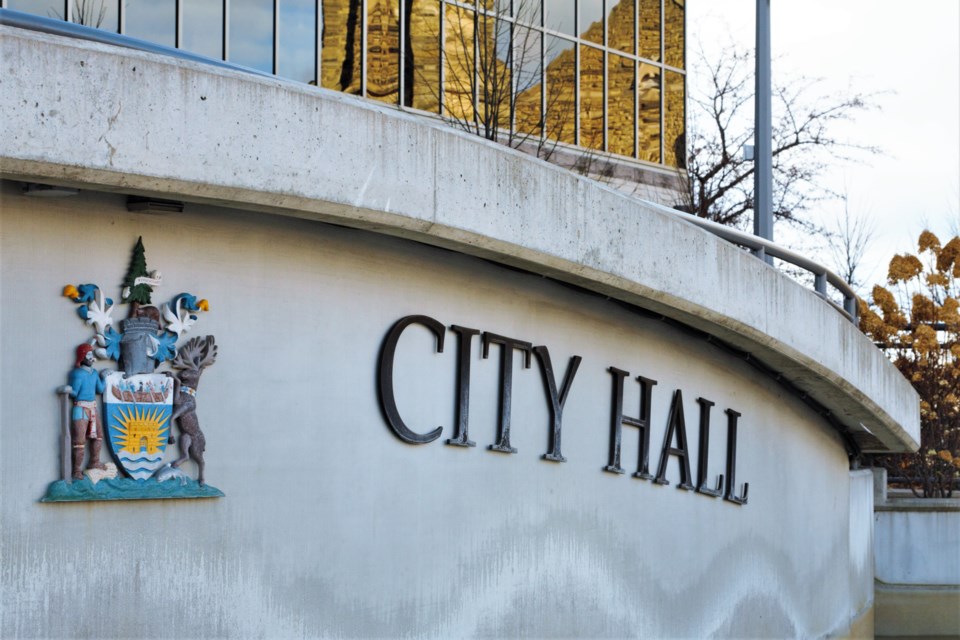THUNDER BAY — The City of Thunder Bay is on track to finish the year with a nearly $4 million deficit, driven largely by policing costs that went far over budget, a heavy winter for snow clearing operations, and rising fuel and materials costs.
In a third-quarter financial report released this week, the city projects a $3.9 million deficit in its tax-supported operations by the end of 2022, or around 1.4 per cent of its net budget of $284.8 million.
While still anticipating a deficit, the projections paint a brighter picture of the city’s finances than the second quarter report, which forecast a $5.3 million deficit.
However, it still marks a turnaround after the city posted a historically high surplus of $10.9 million in 2021, helping to bolster reserve funds that could be used to cover this year’s deficit.
The deficit projection does not include the financial impact of COVID-19, which the city anticipates will be an additional $5.9 million in 2022 — lower than the $7.1 million impact council budgeted for.
The city reported the largest drivers of its anticipated tax-supported deficit include:
- The Thunder Bay Police Service and police services board are projected to go a combined $2.6 million over budget in 2022
- Increased fuel, parts, and service costs for the city’s vehicle fleet ($2.1 million over budget)
- Roads – winter control ($1.4 million) and increased materials costs ($300,000)
- Superior North EMS – overtime, WSIB, fuel and vehicle maintenance ($300,000)
- Higher-than budgeted legal fees ($200,000) and insurance claims ($200,000)
On the other side of the ledger, the city reported finding vacancy savings through hiring gaps ($1.2 million), better-than-expected tax appeal settlements ($1.3 million), and a surplus in long-term care operations due to grant revenue ($700,000).
Discussing the financial update Monday, Coun. Andrew Foulds noted police spending overruns have become “fairly common.”
“It is a concern,” Coun. Mark Bentz agreed, while saying he doesn’t “blame anyone for that.”
Bentz warned the city’s spending on emergency services as a whole is “becoming very expensive,” making up roughly 40 per cent of the budget, city manager Norm Gale estimated.
“Our costs are going up, our reserves are being drawn upon — it’s a bit of a perfect storm,” Bentz said.
City administration also outlined how it plans to pay for the $3.9 million deficit, using $1.4 million from the the Winter Control Reserve Fund, $200,000 from the Legal Fees Reserve Fund and $200,000 from the Insurance Claim Reserve Fund.
That will leave a remaining deficit balance of $2.1 million to be funded from the Stabilization Reserve Fund, the city’s main rainy-day reserve, which currently sits at around $15.6 million.
The city also plans to draw upon the fund to cover $2.9 million of the city’s 2022 COVID-19 losses, depleting it to $10.6 million if projections remain accurate.
The remainder of the city’s projected $5.9 million COVID losses would be covered through $3 million in leftover COVID relief funding from prior years.
Gale said there was little prospect of further pandemic aid from the province or the feds this year.
“Ontario’s been very good to us,” Gale told council. “They really came through when it came to COVID funding. I have no indication that [more] funding is forthcoming.”
The COVID-related financial projections assume restrictions remain lifted through the remainder of 2022
In rate-supported operations, the city projected surpluses of $800,000 in wastewater, primarily due to vacancy savings, and $500,000 in waterworks, as a result of vacancy savings and higher-than-projected user fee revenues.
A $700,000 deficit related to COVID-19 impacts is projected in solid waste operations, included in the COVID-19 losses.
